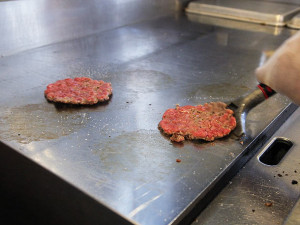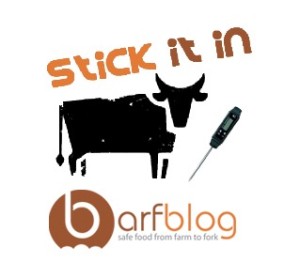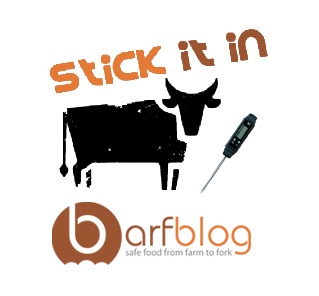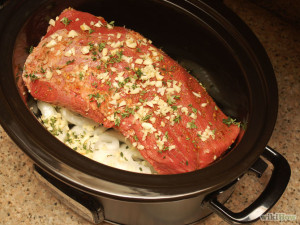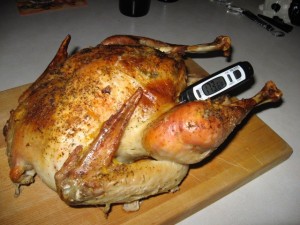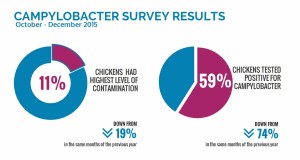Joe Sevier of Epicurious had unknowingly done me a favor, telling his food porn audience it’s OK to eat pink chicken, if it is temped for safety.
Suck on that Food Standards Scotland.
 We’ve been trained as a society to treat pink poultry like anathema. Some cooks even go so far as to overcook chicken on purpose. But what if I told you some pink poultry is safe to eat? Would you believe me?
We’ve been trained as a society to treat pink poultry like anathema. Some cooks even go so far as to overcook chicken on purpose. But what if I told you some pink poultry is safe to eat? Would you believe me?
Amazingly, it’s true. When I spoke to Dr. Greg Blonder, a physicist and co-author of Meathead: The Science of Great Barbecue and Grilling, he explained why some pinkness will never fade. And if no amount of checking the chicken’s temperature will assuage your squeamishness, he offered some tips to avoiding pink poultry before you even bring it home from the store.
What causes cooked meat to turn pink?
“The majority of chickens sold in stores today are between six to eight weeks old,” says Blonder. Young chickens have hollow bones that are thinner and more porous than their older brethren. When cooked, “the purple marrow—so colored due to the presence of myoglobin, a protein responsible for storing oxygen—leaks into the meat.” This reaction, in effect, stains the bone; the color of the meat adjacent to it will not fade regardless of the temperature to which it’s cooked.
What about pink flesh nearer the surface? Certain cooking techniques—especially ones that use lower cooking temperatures, such as smoking—exacerbate the pink meat reaction. That pink smoke ring that’s a telltale sign of good barbecue? Myoglobin again. In fact, you don’t even need smoke to achieve that smoke ring.
 Why is my chicken bloody in the first place?
Why is my chicken bloody in the first place?
Actually, it’s not. Blonder notes, “all commercially-sold chickens are drained of their blood during processing.” The pink, watery liquid you’re seeing is just that: water. The moisture that seeps from the chicken while it’s waiting for you to buy it mixes with that old rascal myoglobin, causing the pink “juices” that you see pooling around the packaged bird—it’s called myowater, FYI.
That same substance is what gushes forth when you cut into a cooking chicken to see if the juices run clear. Unfortunately, that’s a long-held measure of doneness that can’t be trusted. The only way to know if your bird is cooked through: a good quality thermometer. (Here’s the Epi favorite.) To check the temperature, stick the probe into the meatiest part of the bird—checking both the breast and thigh is a good idea. You’re looking for a finished temperature of 160ºF to 165ºF. Accounting for carry-over cooking and the size of whatever it is you’re cooking, that could mean pulling the chicken off the heat anywhere from 150ºF to 155ºF.
Whatever, pink meat still freaks me out
There are a couple of things you can do to avoid pink meat altogether.
First, debone the meat before it’s cooked. Without a myoglobin-y bone around to stain it, your chicken breast will be as pristinely white as possible.
Second, change the pH. A lot of factors are at play here, notes Blonder, and even the way an animal is slaughtered can significantly change the pH level (i.e. acidity) of its meat. Higher pH—i.e. lower acidity—means higher myoglobin and higher myoglobin means pink had better be your new obsession. If you’re not Steven Tyler, opt instead to marinate your meat in a marinade with a lot of citrus or vinegar. Introducing the meat to a high-acid environment will lower the pH and reduce the risk of that anxiety-inducing rosy hue.
Scotland, your overpaid food safety communications types got some explaining to do. If you can’t even get cooking chicken right, how can anyone believe your so-called science-based approach to food safety issues?
And every generation will have its Aerosmith. They aren’t the Stones or Floyd.


